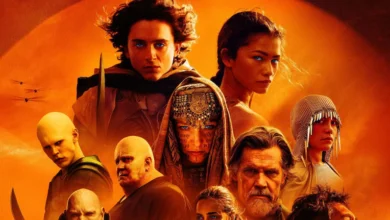The Unexpected Resurrection: Unbanned G+ Revives the Google+ Dream

The abrupt shutdown of Google+ in April 2019 marked the end of an ambitious social experiment by the tech giant. Plagued by persistent privacy scandals, chronically low user engagement, and damaging security vulnerabilities, Google’s answer to Facebook ultimately became synonymous with corporate failure in social networking. Yet, against all odds, the spirit of Google+ has resurfaced in 2025 under the banner of “Unbanned G+” – a phoenix rising from the digital ashes promising a refined vision of community-driven connection. This comprehensive analysis explores the improbable return, its transformative features, and whether it can overcome the ghosts of its predecessor.
The Spectacular Rise and Painful Fall of Google+
Launched in June 2011 with soaring ambitions, Google+ represented Google’s fourth major attempt to conquer social networking after Buzz, Friend Connect, and Orkut. Its innovative “Circles” feature revolutionized sharing by letting users categorize contacts (e.g., friends, colleagues, family) and share content selectively—a stark contrast to Facebook’s broad visibility model. Early adoption seemed promising, with 10 million users signing up within two weeks and 540 million “active” users by 2013. However, these figures proved misleading. Independent analysis revealed 90% of profiles never posted publicly, and the average session lasted a mere 3.3 minutes—dwarfed by Facebook’s 7.5 hours 48.
Beneath the surface, systemic issues festered. A stringent real-name policy alienated users seeking anonymity or pseudonyms, particularly impacting YouTube commenters forced onto the platform. Though Google reversed this policy in July 2014 allowing pseudonyms, the damage to user trust lingered 7. More catastrophically, a critical API vulnerability exposed private data of over 52 million users, which Google failed to disclose for months fearing regulatory backlash. This breach, coupled with abysmal engagement metrics (only 3.5 million users posted 50+ times monthly), cemented Google+’s fate. Vic Gundotra, its leader, departed in 2014, and by 2019, Google euthanized the consumer platform, conceding it couldn’t meet expectations 48.
The Unlikely Rebirth: Introducing Unbanned G+
Emerging unexpectedly in mid-2025, Unbanned G+ positions itself not as a corporate reboot but as a community-centric revival built by former enthusiasts and developers. This distinction is vital—it operates independently from Google, leveraging nostalgia while addressing historical failures. The platform’s very name signals defiance against perceived unfair bans and Google’s abandonment, framing itself as a “second chance” for users who cherished Google+’s unique ethos 6.
Core to its pitch is addressing Google+’s original sins:
- Privacy-First Architecture: Implementing end-to-end encryption for direct messages and granular data controls, directly countering the API flaws that doomed Google+.
- Pseudonymity as Standard: Embracing fake names and anonymous participation from day one, learning from Google’s contentious real-name battles 7.
- Moderation Transparency: Public ban logs and appeal mechanisms aim to rebuild trust eroded by Google+’s opaque moderation, which once allowed extremist content like ISIS propaganda to persist for months 10.
What’s New? Transformative Features of Unbanned G+
Unbanned G+ transcends mere nostalgia, introducing innovations tailored to modern social web demands:
- Intelligent Circles 2.0: While retaining the original Circles concept, it adds AI-assisted sorting that suggests groups based on interaction history and content preferences. Dynamic circles auto-update as relationships evolve, reducing manual curation fatigue. Users can also create “Temporary Circles” for project-based collaborations that expire automatically 6.
- Communities Reimagined: Beyond interest-based forums, communities now feature collaborative tools like shared documents, polls, event planning, and integrated video Hangouts. Admins wield sophisticated role-based permissions and automated moderation bots trained against hate speech. Crucially, communities can federate with other platforms like Mastodon, enabling cross-network discussions without leaving Unbanned G+ 6.
- Creator Studio Suite: Targeting artists, writers, and educators, this toolkit offers built-in newsletter publishing, tip jars, and exclusive content gating. Unlike Google+’s photo-centric approach, it supports multimedia “Projects”—blending text, video, and interactive elements in scrollable portfolios. Early adopters praise its “patronage without platforms” approach, reducing dependency on algorithmic feeds 6.
- Guardrails for Safety: Learning from Google+’s moderation failures, Unbanned G+ enforces stricter age protocols, disabling live chat for streams featuring unsupervised minors under 16—aligning with YouTube’s July 2025 policy updates 2. Its “Overwatch” system combines AI flagging with paid human moderators specializing in regional dialects and cultural context.
Contrasting Old and New: How Unbanned G+ Tackles Google+’s Failures
Table: Evolution from Google+ to Unbanned G+
| Feature/Issue | Google+ (2011–2019) | Unbanned G+ (2025) |
| Identity Policy | Mandated real names until 2014; caused user backlash 7 | Pseudonyms encouraged; anonymity options for comments |
| Data Security | API flaws exposed 52M profiles; delayed disclosure 4 | E2E encryption; optional data localization |
| Monetization | Ad-centric; limited creator tools | Creator Studio with direct tipping & subscriptions |
| Moderation | Slow ISIS content removal; inconsistent bans 10 | “Overwatch” AI + human teams; public ban appeals |
| Platform Scope | Forced integration with YouTube, Gmail | Optional federation; standalone functionality |
This framework doesn’t ignore Google+’s virtues. Hangouts return as lightweight video rooms, and Sparks (content discovery) evolves into a “Interest Web” recommending fringe topics via user-curated hubs rather than algorithms. Crucially, Unbanned G+ positions itself as a “social layer” rather than a walled garden—acknowledging Google+’s initial vision but executing it without compulsory Google account integrations 46.
Joining the Revival: Practical Steps and Early Impressions
Accessing Unbanned G+ requires no Google affiliation. New users sign up via email, with import tools available for former Google+ users seeking to migrate old posts (though comments/Circles aren’t recoverable). The interface echoes Google+’s clean aesthetics but adds dark mode, keyboard shortcuts, and a universal search bar scouring posts, people, and communities.
Early adopters report cautious optimism. Photography circles and niche hobbyist groups (e.g., retro gaming, analog synthesizers) are thriving, benefiting from the platform’s multimedia flexibility. However, critical feedback highlights:
- Fragmented discovery between Communities and Interest Webs
- Android app instability during live streams
- Concerns whether decentralization compromises safety 6
Notably, some users treat it as a “digital archive”—posting long-form thoughts away from TikTok/Instagram’s frenzy. This aligns with Unbanned G+’s slower, deliberation-focused ethos.
The Road Ahead: Sustainability and Challenges
Unbanned G+ faces existential hurdles. Without Google’s funding, it relies on voluntary “Guardian” subscriptions ($3/month) offering premium badges and enhanced analytics. Its roadmap prioritizes:
- Interoperability with ActivityPub (Mastodon/Bluesky protocol)
- Localization for non-English languages
- Ethical ad experiments allowing user revenue shares 6
The largest threat remains scale. Google+ died partly because forced integrations inflated “users” without engagement. Unbanned G+ must grow beyond its initial 200K early adopters without compromising its intimate community feel. Technical hurdles also loom—archival data suggests Google+ suffered from account recreation loopholes where banned users easily returned 12, a flaw Unbanned G+’s team vows to fix via hardware/IP profiling.
Conclusion: More Than Nostalgia
Unbanned G+ isn’t merely a digital ghost haunting 2010s tech nostalgia. It represents a mature reevaluation of social networking’s failures—prioritizing user sovereignty over surveillance capitalism, community over virality, and permanence over ephemeral feeds. While its long-term viability remains unproven, it fulfills a genuine need ignored by mainstream platforms: a space for meaningful connection without algorithmic manipulation. For lapsed Google+ users, it offers redemption; for new users, an alternative to ad-saturated feeds. Its success hinges not on beating Meta, but on proving niche communities can thrive sustainably when given respectful tools.
Frequently Asked Questions (FAQs)
Q1: Is Unbanned G+ officially affiliated with Google?
No. It’s an independent initiative developed by former Google+ enthusiasts and engineers. Google has no involvement, though Unbanned G+ utilizes public APIs for data migration 6.
Q2: Can I recover my old Google+ content?
Partially. Public posts can be imported using Google Takeout archives. Private messages, Circles, and deleted content remain inaccessible due to Google’s 2019 data purge 46.
Q3: How does Unbanned G+ prevent moderation failures like Google+’s ISIS problem?
It employs layered moderation: AI flagging, paid human reviewers, user reporting, and transparent ban logs. Unlike Google+, which ignored extremist content for months 10, Unbanned G+ promises 24-hour escalation paths for severe violations.
Q4: What are the age restrictions?
Users must be 13+ to join. Reflecting industry shifts, live-streaming requires age 16+ or adult co-presence, mirroring YouTube’s July 2025 update 2.
Q5: Will Google+ Games like Angry Birds return?
No. Game data was permanently lost in 2019. However, Unbanned G+ supports HTML5 mini-games, and developers can build new integrations 15.
Q6: Does Google endorse this revival?
While not endorsing it, Google hasn’t challenged it legally—likely focused on AI (e.g., Gemini) and cloud partnerships (e.g., with OpenAI) 1. Unbanned G+ operates under different branding to avoid infringement.



